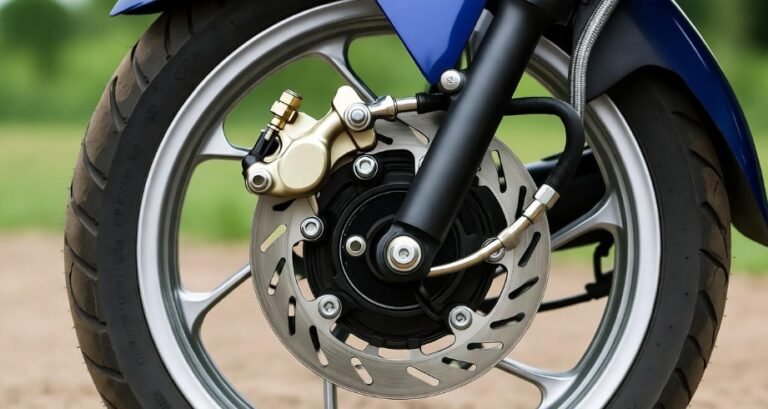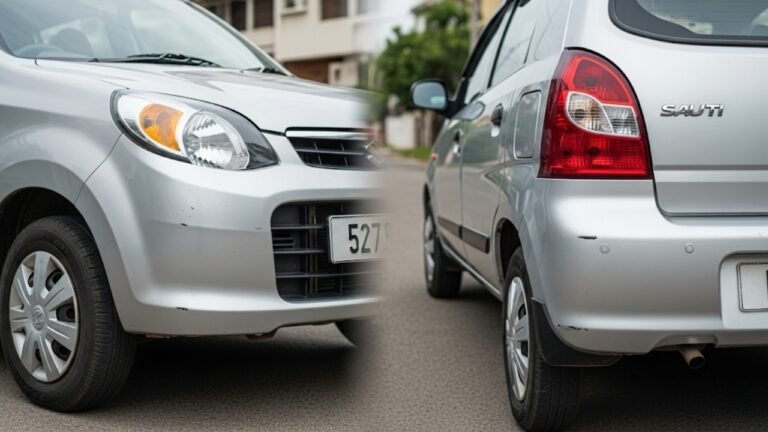How a Race Car Steering Wheel Redefines Driving Control

Ever watched a Formula 1 race and wondered why drivers seem to be playing a video game with their steering wheel? Well, it’s not just for show. The race car steering wheel is more than a tool to turn the car. It’s the brain, heart, and nerve center of a racing machine. It’s where decisions are made in milliseconds. It’s where muscle memory meets machine precision.
Unlike the steering wheel in your everyday car, the one in a race car is a highly customized device. It gives drivers full control over the car’s behavior. Gears, brake bias, fuel mix—it’s all right there. The way these controls are packed into a compact space is both a feat of engineering and a work of art.
Drivers train for months, even years, to master it. One wrong click mid-corner and you’re in the wall. One smart tweak and you shave a tenth off your lap time. That’s the razor-thin line that the steering wheel helps them navigate.
Car Steering Wheel Redefine










Steering More Than Just Wheels: What Makes It Special?
Let’s be honest: the word “steering wheel” sounds a bit too simple for what this thing really does. In racing, it’s a high-tech command center. At first glance, it looks confusing. Buttons, dials, paddles, screens—it can feel like you’re staring at a spaceship’s control panel. But for a race driver, every control has a purpose.
Here’s what you’ll typically find on a race car steering wheel:
-
Gear Shift Paddles: For lightning-fast gear changes.
-
Multi-function Buttons: To adjust engine maps, radio, DRS, and more.
-
LED Shift Lights: To help drivers shift at the perfect RPM.
-
Digital Display: For speed, lap times, gear, tire pressure, and warnings.
-
Rotary Switches: To fine-tune brake bias, fuel mix, and differential settings.
All this in a compact device that fits in your hands. And no, it doesn’t just sit on the column like your Camry’s. Most race car wheels are detachable for quick exits and easier cockpit access. In an emergency, seconds count—and every design element supports that.
Designed for the Track: Materials That Matter
Imagine gripping a hot metal bar for two hours straight while flying through corners at 200 mph. That’s why race car steering wheels are made of special materials. They’re not just fancy—each one is chosen for its strength, weight, and grip.
Common materials include:
| Material | Purpose | Benefit |
|---|---|---|
| Carbon Fiber | Structure and lightweight durability | Strong, ultra-light |
| Alcantara | Grip and comfort | Sweat-resistant, non-slip feel |
| Titanium | Mounting and high-stress components | Extremely durable |
| Rubber Inserts | Vibration reduction | Helps avoid fatigue |
Alcantara, especially, is popular for the grip it provides even when the driver’s gloves get sweaty. The texture gives feedback through the hands. It tells the driver when the car is dancing on the edge of grip.
You could say the wheel “talks” to the driver. It communicates—through subtle vibrations and resistance—how the car is feeling. And that feedback is everything when you’re inches from disaster.
Not One-Size-Fits-All: Customization is Key
What works for one driver might not work for another. That’s why teams spend hours customizing the layout, grip shape, and button placement for each racer. Some prefer firmer paddles. Others want buttons closer to their thumbs.
I remember chatting with a karting buddy who transitioned to GT racing. His biggest challenge? Relearning muscle memory. Every new car meant reconfiguring how he interacted with the steering wheel. And in a race, your hands should move automatically—not with conscious thought.
Customization goes beyond preference. It reduces cognitive load. That’s a fancy way of saying: the less you think, the faster you react. In racing, mental clarity is your sharpest weapon.
The Evolution: How Racing Wheels Got So Smart
If you look back a few decades, race car steering wheels were just… wheels. Circular, basic, and used only for turning. But as racing evolved, so did the need for more control. Electronic systems became more advanced. And that meant putting more control at the driver’s fingertips.
Think about Formula 1. In the 80s, the steering wheel had no buttons. By the early 2000s, there were a few. Today? There are more than 20 inputs—each essential. Things like:
-
Changing fuel modes to save weight
-
Adjusting torque delivery for different weather
-
Talking to engineers mid-lap
-
Activating overtake boosts or energy recovery systems
It’s all part of the game now. In fact, drivers train on simulators that replicate their exact wheel. They practice thousands of laps just to get used to where their fingers should move without looking.
From Track to Street: What Racing Wheels Teach Us
You might be thinking, “Okay, cool… but how does this affect me?” Good question.
Even if you’ll never touch a Formula 1 wheel, you’ve felt its influence. Paddle shifters? Came from racing. Flat-bottom wheels in sports cars? Also from racing. Even digital dashes and driving modes started with motorsport.
Race technology often trickles down. Automakers learn what works in high-stress environments and apply it to road cars. It’s like testing under fire—what survives racing is usually built to last.
So, next time you change driving modes in your car or flick a paddle shifter, thank the guys out there risking it all on Sunday.
Human vs. Machine: The Real Battle Happens Here
In many ways, the race car steering wheel is where the man meets the machine. It’s where skill, instinct, and engineering collide. Every time a driver reacts to oversteer or launches an overtake, it’s this little device that makes it all happen.
That connection is personal. It’s sweaty. It’s intense. It’s sometimes life or death. But when it all clicks? It’s pure art.
There’s a rhythm to it, like playing a fast song on the piano. You’re constantly adjusting inputs, reading the feedback, staying ahead of the car. And when the wheel and driver become one, magic happens.
Steering Toward the Future: What’s Next?
Technology keeps evolving, and the race car steering wheel will too. We’re already seeing:
-
Touch-sensitive controls
-
Advanced haptics (vibrations for feedback)
-
AI-assisted settings
-
Augmented reality integration
It’s both exciting and a little intimidating. Will future wheels be more digital than tactile? Will they talk back to drivers? Perhaps even self-adjust mid-corner using AI?
Whatever happens, the bond between driver and wheel will always be sacred. No matter how smart the system, it’s the human touch that brings racing to life.
Final Thoughts: Why It’s More Than Just a Wheel
To the outside world, a race car steering wheel might look like a gadget. But to racers, it’s a lifeline. It’s the tool that connects heartbeats to horsepower. That tiny device holds the power to win or crash. To hold back or go all-in.
And beyond all the buttons, tech, and carbon fiber—it’s a reminder of what racing is really about. Precision. Passion. Courage.
So next time you watch a race, look closely at that wheel in the driver’s hands. Every twitch, every flick, every press—it’s telling a story. A story of control, chaos, and everything in between.





